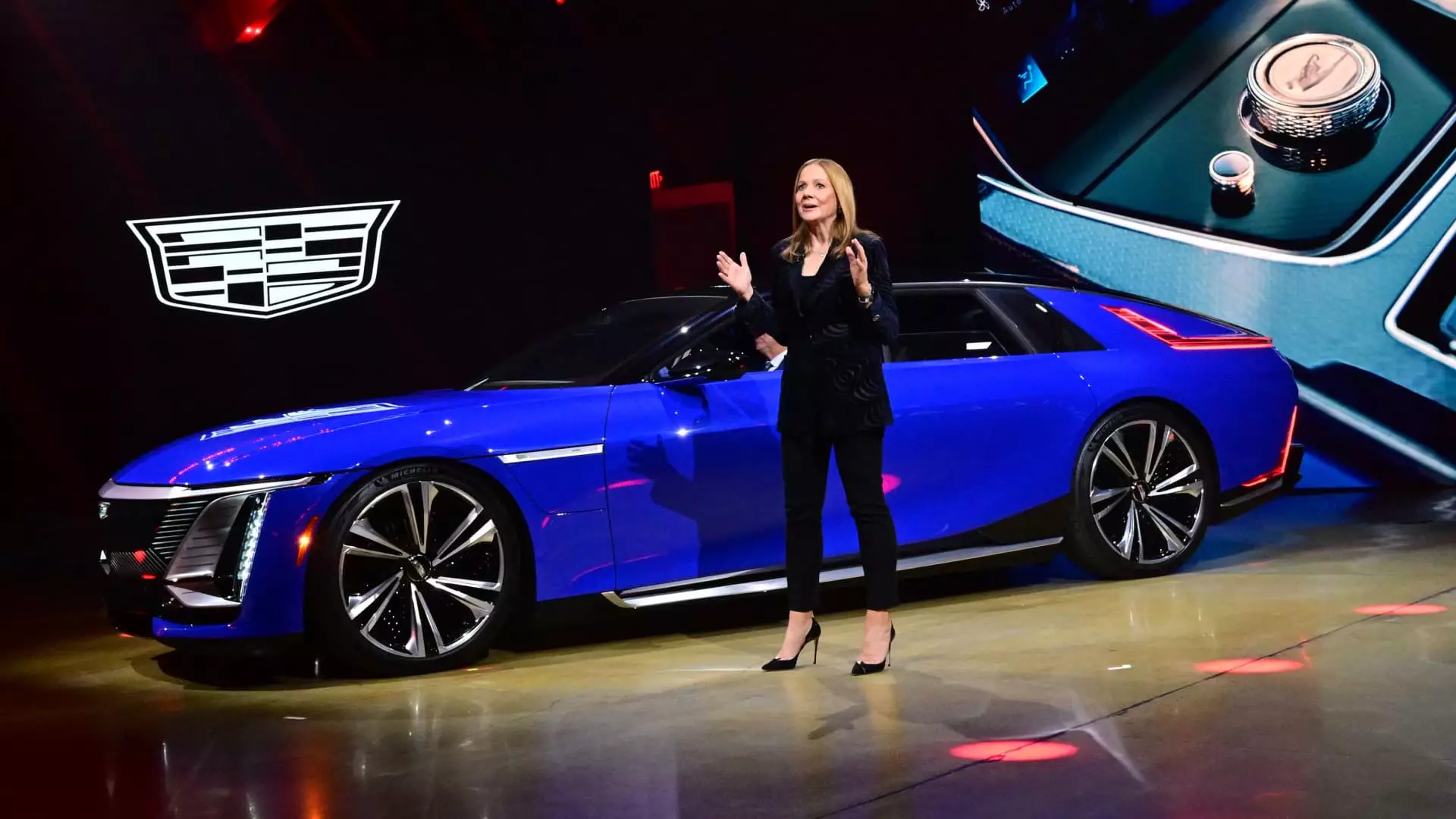The automotive industry is undergoing a profound transformation, driven primarily by the shift toward electric vehicles (EVs). For General Motors (GM), this transition has been both exhilarating and tumultuous. With ambitious goals set by CEO Mary Barra in October 2021, the expectation was that GM would match, if not surpass, Tesla in terms of EV sales by 2025. However, various challenges have hindered the automaker’s progress, leaving it in a competitive struggle with other manufacturers such as Ford and Hyundai. This article delves into GM’s current position in the EV market, the hurdles it faces, and its strategies moving forward.
The outlook for General Motors in the electric vehicle sector has not materialized as smoothly as originally envisioned. Despite plans to ramp up production and release a more robust lineup of EVs, GM has encountered obstacles in production capacity, supply chain logistics, and software issues that resulted in slower adoption rates. This has placed the company in a precarious position, trailing behind rivals who have managed to capture a more substantial share of the market.
GM’s CEO expressed confidence in the company’s growth strategy, but the reality remains a widening gap between its sales figures and those of Tesla, which continues to dominate the EV scene with staggering sales numbers. The disparity is highlighted by data indicating that Tesla sold over 164,000 EVs in the second quarter alone—approximately double the combined sales of GM, Ford, and Hyundai/Kia during the same timeframe.
Despite setbacks, recent sales data reveals a more encouraging narrative for GM. Through July and August of this year, the automaker achieved a remarkable uptick in EV sales, nearing 21,000 units—almost equating to its total sales for the entire previous quarter. A 70% increase year-on-year indicates that GM’s efforts to grow its electric vehicle market are finally gaining traction.
Notably, GM’s president of global markets, Rory Harvey, emphasized that the expansion of GM’s EV lineup has positioned the company for future success. With vehicles ranging across differing price segments, from the Chevy Equinox to the luxurious Cadillac Celestiq, GM claims to have the most comprehensive electric vehicle lineup in the U.S. market today.
As GM continues to ramp up its production capabilities, the automaker has forecasted a rolling wave of strong sales toward the year’s conclusion. Anticipating a potential surge in EV adoption, GM’s leaders express optimism that the company could capture a commendable share of the market upswing.
With the automotive landscape increasingly pivoting towards electric mobility, GM’s broad range of Ultium-based EVs is crucial for its future trajectory. This architecture allows for varying vehicle models and ensures that GM can adapt to customer interests and preferences more fluidly. However, challenges remain: EVs generally generate lower profit margins compared to conventional gas models. GM recognizes the need to change this narrative, as a successful EV strategy requires not only production volume, but also profitability on every unit sold.
While GM maintains ambitious targets for electric vehicle production, including a range of 200,000 to 250,000 EVs for the year, the company has shown prudence by withdrawing some earlier targets deemed overly optimistic. This reevaluation underscores a commitment to aligning production output with actual market demand—a move that could both mitigate financial risk and foster sustainable growth.
Using customer interactions as a guiding force, GM is implementing various “roadshow events” aimed at increasing public engagement with its vehicles. By prioritizing consumer experience and feedback, the automaker hopes to echo its goal of “putting butts in seats” as a pathway to boosting sales. Such initiatives are especially relevant in a time when automakers are competing for consumer attention in an electrifying market.
As GM navigates the complexities of the electric vehicle landscape, it faces the dual challenge of meeting its ambitious long-term goals while addressing immediate obstacles in production and consumer adoption. Although the road to catching Tesla remains steep, the company is gradually solidifying its position in the competitive EV market.
The ongoing emphasis on an expansive and versatile electric vehicle lineup may yield positive results, but it will ultimately depend on GM’s ability to adapt and respond to consumer preferences and the dynamics of the marketplace. While the automaker has withdrawn certain targets, it retains a foundational goal of transitioning to all-electric vehicle offerings by 2035, contingent on market conditions.
GM’s journey in the EV market illustrates both the challenges and opportunities within this rapidly evolving landscape. With strategic adjustments and a renewed focus on consumer engagement, GM has the potential to redefine its role, carve out a lasting legacy in the EV segment, and ultimately secure a competitive stance in the race against industry giants like Tesla and Ford. The next few years will be pivotal, as the electric vehicle marketplace continues to mature and consumer expectations evolve.

Leave a Reply